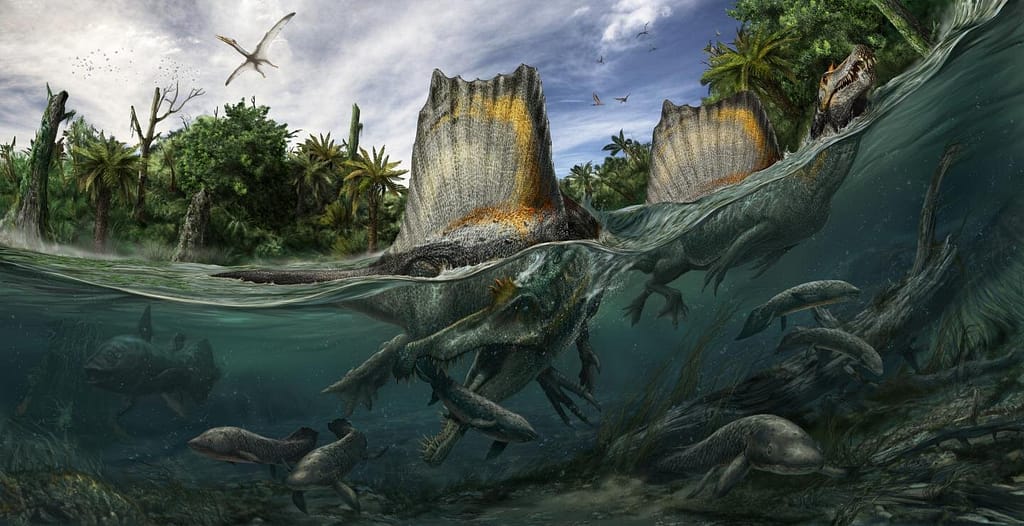
The wealth of aquatic life, including shrimp, bony fish, lungfish and giant lobe-finned coelacanths, supported a remarkable array of predators, including the fish-eating sail-backed Spinosaurus and toothless pterosaur Alanqa soaring overhead. Credit: Artwork by Davide Bonadonna
Introduction
The Kem Kem Beds in Morocco have gained worldwide recognition for their remarkable fossil findings, featuring multiple large non-avian theropods, as well as impressive pterosaurs and crocodilians. A group of esteemed researchers has now published an extensive geology and paleontology monograph, unveiling new insights about the renowned Kem Kem Beds.
Objective of the Research
The primary objective of this research is to offer a comprehensive review of the rocks and fossils found in the Kem Kem Beds to the global scientific community. The monograph delves into the geology and paleontology of this famous yet surprisingly understudied area, providing descriptions and formal names for the different layers of rock and summarizing the diverse range of preserved life forms.
Key Findings
Notably, the region is renowned for its abundance of fossils found across these units, with many originating from commercial fossil collecting. This monograph represents the first endeavor to pinpoint the specific sites where many significant discoveries were made.
Research Methodology
To compile a comprehensive narrative about the Kem Kem Beds, the authors of the monograph conducted extensive research, visiting collections of Kem Kem fossils worldwide and leading numerous expeditions to the region. The fossil and geological data presented in the monograph are derived from various sources.
Distinctive Features of the Kem Kem Beds
One of the distinctive features of the Kem Kem Beds is the presence of several large-bodied theropods, including the sail-backed Spinosaurus and the sabre-toothed Carcharodontosaurus. Most fossils in the region are discovered as isolated and fragmented pieces weathered from sandstones.
Anticipated Increase in Diversity
The authors anticipate a substantial increase in diversity within the Kem Kem Beds in the coming decades, given the ongoing discovery of new specimens and the expanding scope of paleontological research.
Conclusion
In summary, the Kem Kem Beds are poised to exhibit a significant surge in diversity in the coming decades. The array of currently known taxa has reached a level of maturity that allows for a summary of the vertebrate assemblage and a discussion of its paleoecological context.



